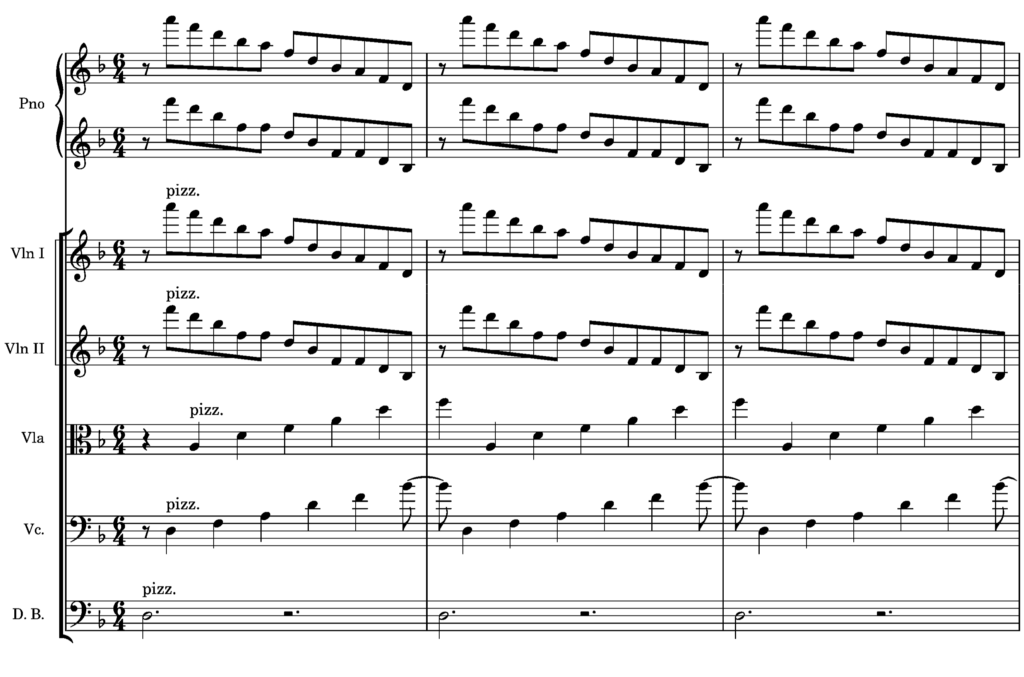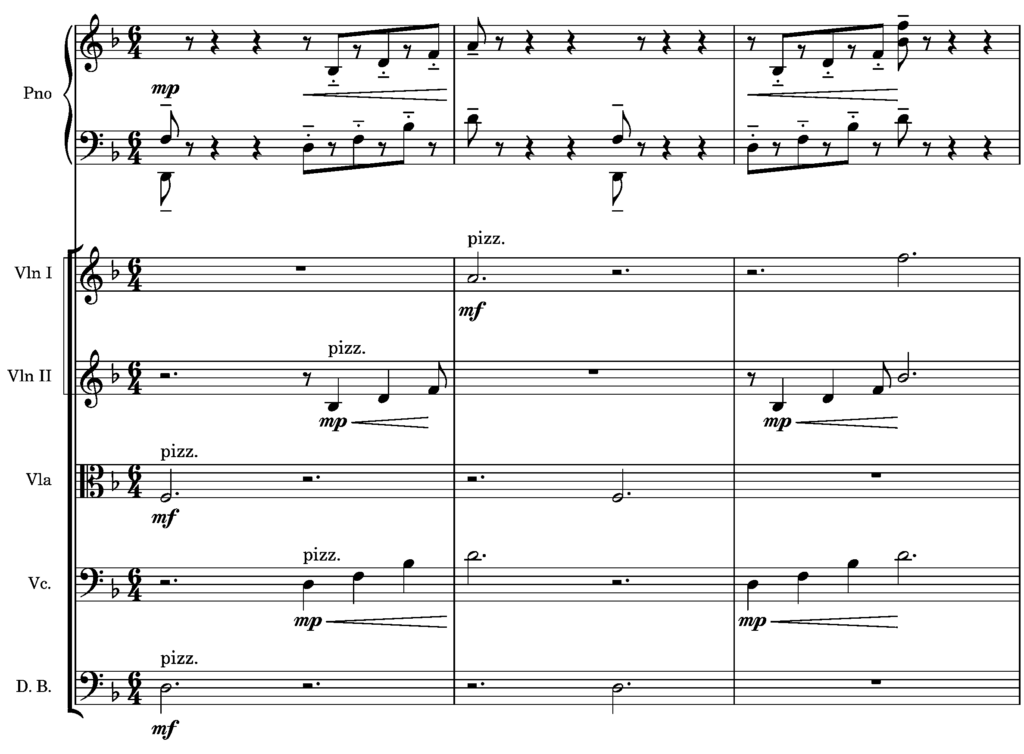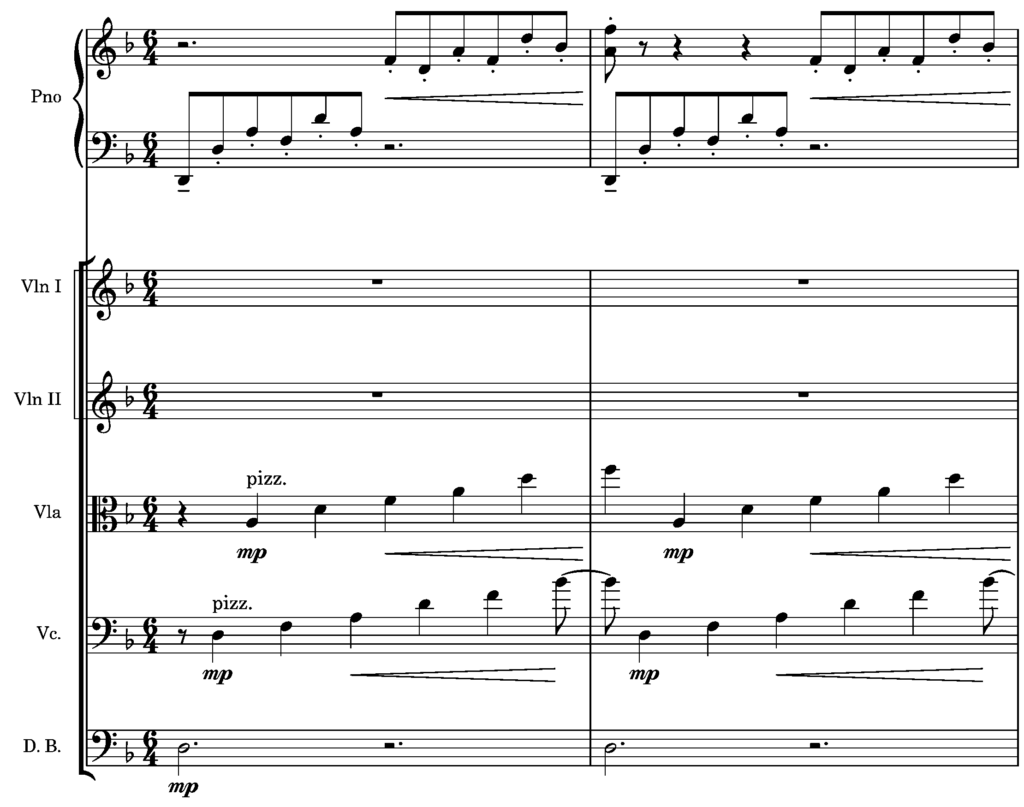Much like doing other kinds of work, composing music isn’t always easy or a straight line from the first note to the last. That’s not to say that it would be better to work like that – in fact, it may be beneficial to start somewhere in the middle, and many times it can be necessary to go back and reevaluate or rework what you have already written.
Long before I got the script from Tora, my librettist, we started workshopping ideas for the story as early as last October and as a couple of her other projects wound down, she got started proper on the libretto early this year. By then, we had settled on the overall plot and characters, and had an idea for a four-scene structure. I used that as the basis for a number of instrumental sketches of how the music could sound at a couple of points in the at that point still rather loosely planned-out story.
Over the past two months, as I have been setting the actual libretto to music, those early sketches have been incredibly useful. In fact, all but one of them will make it into the finished product! The one I won’t be able to use is due to the story developing slightly differently than we had originally planned.
Let me demonstrate using one of the sketches, which I wrote for a planned scene where the mother at an appointment with a midwife, as signs of the mother’s postpartum psychosis are starting to show more clearly. (The plot centres around the mother as her mental state gradually worsens. It’s kitchen sink realism with a Hitchcockian twist!)

Here is an excerpt from the initial sketch; it is a bit longer than three bars, but the remainder is based on the same “motor” as shown here, only transposed to give it a bit of harmonic development. Not shown here is also a simple wind accompaniment in clarinet, bassoon and horn, and triangle hits on the first beat of each bar.
I wanted to convey the sense of unease that not only the mother feels, but also the midwife, as she becomes aware of the mother’s degrading mental state. I think the combo of pizzicato and piano will work well together, and hopefully sound more like pizzicato than piano. (I only have 2+2 violins and one each of viola, cello and bass.)
When it came time to actually compose this scene, I quickly realised that I had to treat this sketch as the “complete” version of this motif and that I had to scale the music back from here in order to use the motif more than once. The dramatic apex of the scene didn’t fit with this music, either, so I had no use for an even more intense version.
This is actually not far from a recurring task I gave my students when I taught composition at the folk high school in Härnösand: to reduce a given musical texture or phrase as much as they could. It turned out to be rather hard for many of them.
It requires, I think, a deeper understanding of not only the particular musical material at hand but also of how the different aspects – including rhythm, melody, harmony, and form – combine, and how each of them can be reduced and/or disassembled.

Here is the first variation of the scene 2 motif, used in the very beginning of the scene: it’s much sparser, simplified, like an embryo of what it will become later. The falling line in the violins is only hinted at a little bit further on, as a short, three-beat-long counter-line that appears only to add some variation but is actually also a hint of what is to come. The basics are here, but the motif is severely reduced.

And this is the second version: here, I’ve focused entirely on the rising bass line. A bunch of other things have happened in the music as well as the plot in between this and the previous variation, so it makes sense to have this one be, well, “busier”. As a contrast to this very rhythmic accompaniment, the singers’ melodies are very lyrical.
A little further on still, again with some other music in between, we end up with more or less exactly the music I sketched out back in February. I had similar luck with sketches for both scenes 1 and 3. The one sketch I won’t be able to use was meant for a climactic confrontation in scene 3, which will now have to be handled differently – due to time constraints.
Since last year, at the very start of the project, we have known that we have a pretty strict 20-minute limit. It’s called “Short Stories” for a reason, after all. We were pretty confident we would manage to tell our story within the time limit, but now that I have passed the 16-minute mark, it appears we were perhaps a little overconfident…
Naturally, I would prefer not to make any cuts to the music I’ve already written, but even apart from that it’s really hard to see where it would be possible to cut anything, story-wise – it’s already quite lean as it is.
There are almost no purely instrumental sections either, as I have had to make judicious use of every precious minute of music to further the plot. The precious few times no one is singing are only where it is necessary for the narrative to make sense, and even then, I’ve kept them as short as I felt that I could.
It will be up to Tora, my librettist, to decide what to change, what to cut and where, and how to alter the plot. We’ve had such a great collaboration so far and based on our team effort thus far, I’m certain the altered version will turn out excellent – even if it may take a bit of extra time and work to get it there. My deadline is in October, though, so we have a generous margin, which feels great. It means both I and Tora can let the opera rest in July and get back to working on it with a fresh perspective.
In other exciting and much more actual news, this Saturday, the Octava Chamber Orchestra will premiere “Brio”, which I wrote for them earlier this year. I already did a proper deep-dive on that piece here on my blog – you should check it out if you haven’t already! Later on, I might do more in-depth presentations of the opera as well.
If you’re in the northwest Washington State area, come to the Maple Park Church in Lynnwood (link to Google Maps, or check out the church’s own website) this Saturday June 29th at 6:00pm for the Octava Chamber Orchestra Summer Chamber Music Extravaganza! Besides my piece, there will be several other world premieres as well.
I didn’t post anything last week, and I will take a break from posting in July. Before that, though, I will share some impressions from the concert in next week’s post. Also, remember that you can subscribe to a mailing list to get every new blog post straight to your inbox – no secret referrals, spam, or sharing of your address. At most, one blog post a week (if that!). And you can unsubscribe again at any time.
Type in your e-mail address here and click the button to subscribe.
